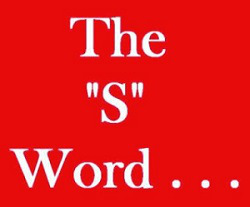 What is it about the humble synopsis that strikes fear in the heart of writers everywhere? After all, it is only a few pages. How hard could it be?
What is it about the humble synopsis that strikes fear in the heart of writers everywhere? After all, it is only a few pages. How hard could it be?
For writers who rely on advanced contracts, a good synopsis is essential. For writers like me, who do it at the end, it’s that cloud hanging over you that you can no longer put off. So many people hate to write them, and yet the synopsis is one of the most important aspects of writing. It’s far more than just an outline.
Think of the synopsis as your resume. This is the first thing a prospective publisher sees. Because they receive thousands of submissions, it needs to be as concise and perfect as possible in order to get noticed. Just like your resume, it’s not going to contain all the details. The purpose is to sell yourself enough to get to the interview (full manuscript submission) stage. That’s where you unleash your full potential.
For me the challenge is not in the writing of the synopsis itself, but in staying motivated and engaged after I’ve already spent months working with my characters. I’m ready to move on, and the thought of recapping everything is dreadfully boring. In fact, I’m supposed to be writing one right now and instead I am doing this.
For anyone getting started, there is a tonne of information out there. Google is your friend. My approach is simple:
Start by summarizing each chapter in one or two sentences. This is the who, what, where and when. Stick to the crucial details. What is the purpose of that chapter or scene? Why did you include it. This exercise can also help you find flaws in pacing or plot. For example, if you can easily summarize 15 manuscript pages in one sentence, maybe that scene is too long or not necessary. If you are bored reading your own synopsis, chances are the reader will be bored too.
Now we add in the emotional component. This is the “why”. For each of the chapters you summarized, make sure to include a statement about the emotional arc happening at the same time. How is the character feeling? Have they somehow changed? Come to a realization?
 After you have completed both steps, if you are over the publisher’s prescribed length, you will need to go back and continue whittling down step one. If you’re fortunate and you are under the prescribed length, you can slowly add some details back in, still always asking yourself why it is important. Above all, a good synopsis includes both the external plot as well as the interior (emotional or romantic) one.
After you have completed both steps, if you are over the publisher’s prescribed length, you will need to go back and continue whittling down step one. If you’re fortunate and you are under the prescribed length, you can slowly add some details back in, still always asking yourself why it is important. Above all, a good synopsis includes both the external plot as well as the interior (emotional or romantic) one.
And now that I can’t delay it any longer, I’m off to write mine.


 newest »
newest »
 newest »
newest »
 Jenn wrote: "This is the resource I use for my synopses: http://www.publishingcrawl.com/2012/0...
Jenn wrote: "This is the resource I use for my synopses: http://www.publishingcrawl.com/2012/0...







I rarely write a one-pager, but this is a great help in structuring the synopsis. Also, having a table that lists chapters/scenes and what happens in each is a big help as you revise and move on to writing a synopsis.
Good luck with yours!